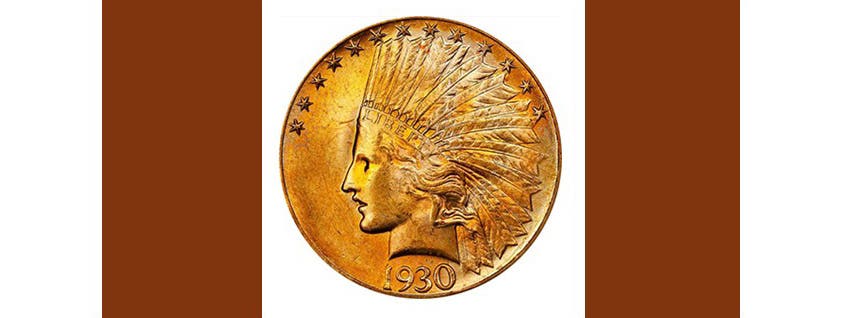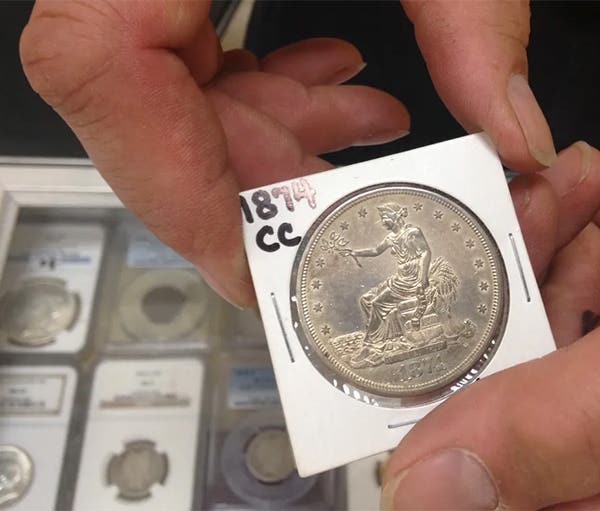Viewpoint: Overhaul commem coin program
On Jan. 3 Numismatic News featured an article by David L. Ganz discussing several commemorative coin proposals pending before Congress. But for these, or any other new commemorative coins to be successful, changes are needed, because the modern commemorative coin program has badly stagnated.
By David Allen Hines
On Jan. 3 Numismatic News featured an article by David L. Ganz discussing several commemorative coin proposals pending before Congress. But for these, or any other new commemorative coins to be successful, changes are needed, because the modern commemorative coin program has badly stagnated.
Recent issues have received little publicity, and sales have been mere fractions of the authorized mintages.
Collectors may be happy at the low sales figures for last year’s commemoratives, because this may portend a future increase in value due to perceived scarcity. But if the goal of a commemorative coin is to draw nation-wide attention to the topic being commemorated and generate surcharge revenue for the causes, recent issues haven’t done well.
There has been legitimate debate over whether recent commemoratives were for causes or events that have enough widespread appeal for a national program, or how well the Mint has marketed the coins. But the most significant factor in the program’s decline has been a result of the tremendous increase in precious metals prices in recent years. The higher cost of gold and silver has resulted in commemorative silver dollars that now are priced at more than $50, and $5 gold pieces cost several hundred dollars.
Both prices are more than many regular collectors can, or are willing, to spend on modern mint issues that have tended to drop in value in the after-market, and the high prices also make the coins unappealing to the general public. Additionally, the designs on many of the coins have been of questionable artistic merit, further limiting their appeal.
But, with a few tweaks to the status quo, the commemorative program can be revived. Choosing topics of proven nationwide interest and appeal combined with an improved marketing campaign to the public can attract a larger potential sales base; changing the denominations to decrease precious metal content can make the coins more affordably priced yet retain the appeal of owning real gold and silver. Hiring an outside design firm such as was done when Tiffany & Co. designed the elegant Dolly Madison silver dollars in 1999 can ensure a quality design while relieving pressure from Mint staff already tasked with creating many new quarter and dollar coin designs each year. The combination of interesting, commonly recognized topics, precious metal, lower cost, attractive designs, and unusual denominations might well result in a home run program that could reinvigorate the modern commemorative program.
Two of the proposals Ganz talked about in his article in particular attracted my attention for their national interest, and, with a few changes to the introduced legislation, they might be developed into successful programs.
First, there is a proposal to mint a silver dollar to benefit the March of Dimes, certainly a well-known and worthy cause. But why yet another silver dollar? Instead, how about a commemorative silver dime to benefit the March of Dimes? With the price of silver at $33.93 per ounce as I write this mid-day on Feb. 8, the 0.07234 ounce in a standard silver dime produces a net precious metal cost of just $2.45. Even with production and packaging costs, these coins could be sold for just $25, with $15 from the sale of each coin going to the March of Dimes. If just 100,000 commemorative dimes were sold, this would provide the March of Dimes with $1.5 million dollars, plus a great deal of publicity. And with the affordable price, popular topic, and this being the first-ever commemorative silver dime (if you don’t count the 1996-W 50th anniversary Roosevelt dime included in Mint sets that year), sales to collectors and the general public might easily surpass this modest goal.
Like what you're reading? Subscribe to our FREE email newsletter![form id="27827"]
The other proposed legislation Ganz discussed that caught my attention was the “USS Cruiser Olympia Commemorative Coin Act” to benefit the conservation and preservation of the sole remaining Spanish-American War U.S. Navy warship that is badly in need of repairs, restoration and funds to assure permanent maintenance and operations. The vessel was launched in 1892 and is the world’s oldest steel warship still in the water. It was the flagship of Commodore George Dewey during his significant victory over the Spanish navy during the war. (For an excellent history of the Spanish-American War, I highly recommend Empire by Default: The Spanish-American War and The Dawn of the American Century by Ivan Musicant.)
But of instead of the now routine status quo for modern commemoratives of using the denominations of a silver dollar and gold half eagle, with a likely end result of high cost coins with low sales, what if instead the denominations employed were the three dollar gold coin and silver twenty cent piece?
The $3 gold coin, last minted in 1889, contains 0.14512 ounce of gold compared to the 0.24187 ounce in a half eagle, meaning the $3 coin could be sold at a significantly lower price than the half eagle. At the $1,733.19 per ounce gold price as I write this, a $3 piece would contain $251.52 worth of gold, compared to $419.21 in a half eagle, quite a difference that could significantly lower the cost of a $3 denomination commemorative. And the diameter of the $3 coin, 20.5 millimeters, is inconsequentially smaller than the 21.6 millimeter size of the $5 coin, so after producing many half eagle designs in recent years, Mint engravers should have no problem with executing designs for a $3 coin.
The 20-cent piece was last minted in 1878. It has a silver content of 0.1447 ounce, which at $33.93 per ounce includes $4.91 of silver, vastly less expensive than the silver dollar, which with 0.7736 ounce of silver, contains $26.25 intrinsic value in silver. The diameter is almost the same as the quarter, and in recent years, we have had many different designs appear on the quarter, so Mint engravers should be familiar with devising designs of this size.
Imagine the interest that might be generated by a March of Dimes silver commemorative dime, and a two-coin set containing a $3 gold piece and a silver 20-cent piece benefitting restoration of the USS Olympia. These coins would all still contain precious metal, but in quantities that would make them much more affordable to the average collector and to the general public. The odd, long unused denominations would certainly engender interest and publicity, which would likely improve sales. Both causes – the March of Dimes and the preservation of the oldest steel warship that scored a major victor in the war that made the U.S. an international power – have national appeal and merit.
The problem now is convincing Congress to change the established status quo of the use of silver dollars, half dollars and half eagles for virtually every non-circulating commemorative issued since 1982. Collectors who often criticize the Mint need to remember that it is Congress and the President, who by law, determine what commemorative coins are issued, in what denominations, and in what quantities. The Mint only handles the production, marketing and sales of the coins.
David Allen Hines is a collector from Kingston, Pa. Viewpoint is a forum for the expression of opinion on a variety of numismatic subjects. The opinions expressed here are not necessarily those of Numismatic News. To have your opinion considered for Viewpoint, write to David C. Harper, Editor, Numismatic News, 700 E. State St., Iola, WI 54990. Send email to david.harper@fwmedia.com.
More Coin Collecting Resources:
• Subscribe to our Coin Price Guide, buy Coin Books & Coin Folders and join the NumisMaster VIP Program








